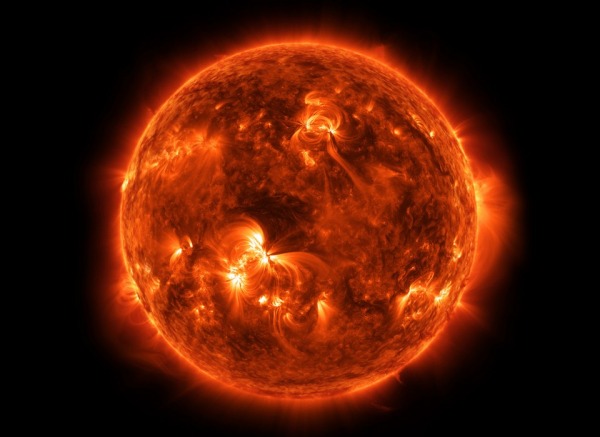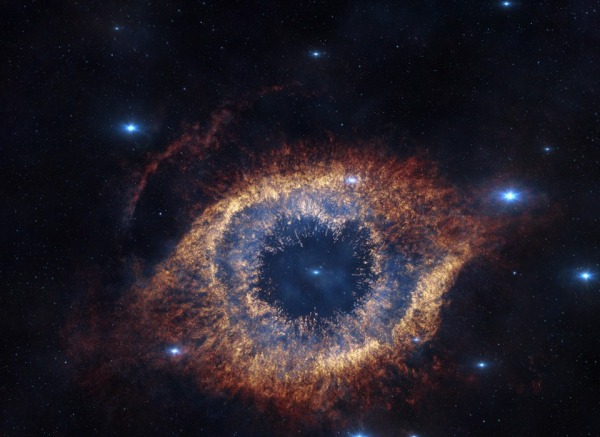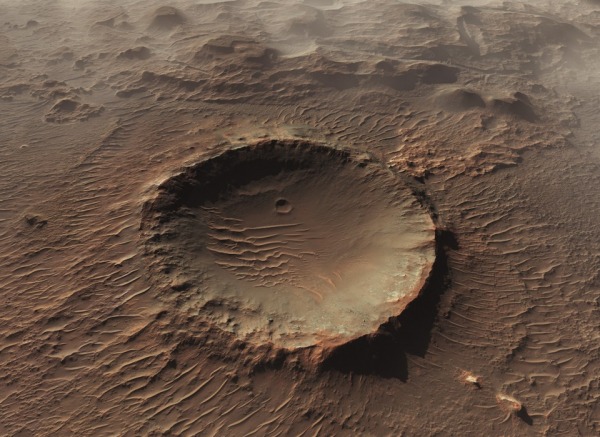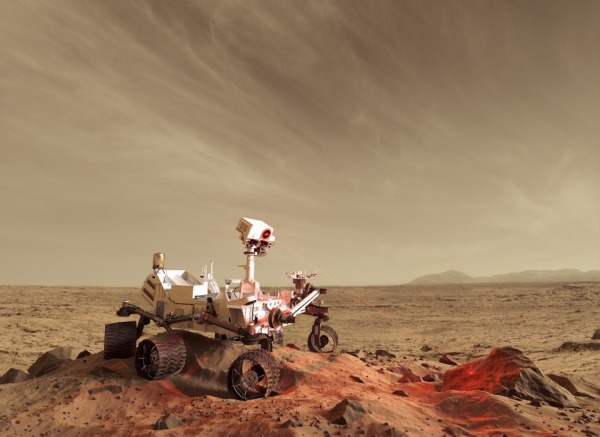Featured Scenes
Hidden Universe is an immersive experience that takes you on an unforgettable journey through the universe. Witness an intense image of our sun; the most precise images of the Martian landscape ever captured; and distant celestial objects, including stunning images of colorful gas nebulas and clusters of galaxies. The film reveals clues about space that until recently were completely hidden, inspiring new insights about how the universe was formed. In an age where space tourism has become reality, the film offers an inspiring story of human endeavor from a prime seat with a magnificent point-of-view.
The Sun
Name: The Sun (alias brightest star)
Age: about 4.5 billion years
Location: our solar system is on the edge of a spiral arm called Orion’s Arm, and is one-half to two-thirds of the way (28,000 light-years) from the center of our Milky Way galaxy.
Average distance from Earth: 1 astronomical unit (AU), which equals 92,960,000 miles (149,600,000 km)
Height (Diameter): 863,700 miles (1,390,000 kilometers)
Weight (Mass): 1.99 x 1030 kg
Distinguishing Features: the Sun, an ordinary star, contains more than 99.8% of the total mass of our solar system.
source: http://amazing-space.stsci.edu
Helix Nebula
Name: Helix Nebula (aliases NGC 7293, Caldwell 63, “the eye”)
Description: Planetary nebula
Date of Birth (Age): 10,000 years
Location: found in the constellation Aquarius
Distance from Earth: 650 light-years
Height (Size): The nebula spans a distance of 2.5 to 3 light-years across.
source: http://amazing-space.stsci.edu
Mars
Name: Mars (aliases: the red planet, home of “Martians”)
Date of Birth (Age): about the same age as the Sun — 4.5 billion years
Location: solar system
Average distance from the Sun: 141,600,000 miles (227,900,000 km)
Height (Diameter): 4,222 miles (6794 km)
Weight (Mass): 6.4219 x 1023 kg
Orbital period around the Sun: 1.88 Earth years (687 Earth days)
Number of moons: Two — Deimos and Phobos.
Distinguishing Features: Mars has a very thin atmosphere containing mostly carbon dioxide, with nitrogen, argon, and trace amounts of oxygen and water vapor. There is evidence that liquid water flowed on the surface long ago. Now all the water left on the planet is frozen in the polar ice caps or beneath the surface.
source: http://amazing-space.stsci.edu
Curiosity Rover
Name: Curiosity Rover (aliases NASA’s Mars Science Laboratory, MSL)
Description: car-size robotic rover
Size: about the size of a small SUV — 10 feet long (about 3 meters) not including the arm, 9 feet (2.7 meters) wide.
Height: 7 feet tall (2.2 meters) — or about the height of a basketball player.
Weight: 900 kilograms (2,000 pounds)
Features: geology lab, rocker-bogie suspension, a laser and lots of cameras
Distinguishing Feature: eyes
The MastCam is the rover’s “eyes” and Curiosity’s imaging tool that captures high-resolution video of the Martian landscape. MastCam consists of two camera systems mounted on a mast that rises above Curiosity’s main body, so the instrument has a good view of the Red Planet environment.
Considered Heavily Armed: carrying rock-vaporizing laser
The rover has ChemCam, which can fire a laser at Martian rocks from up to 30 feet (9 meters) away and analyze the composition of the vaporized bits. ChemCam enables Curiosity to study rocks that are out of reach of its flexible robotic arm.
sources: http://mars.jpl.nasa.gov and http://space.com




